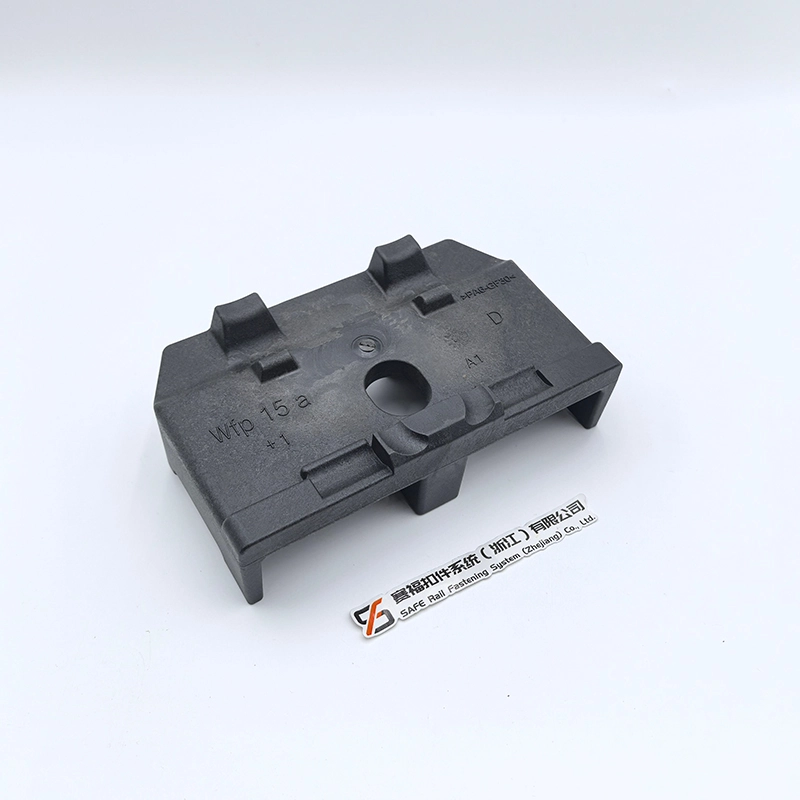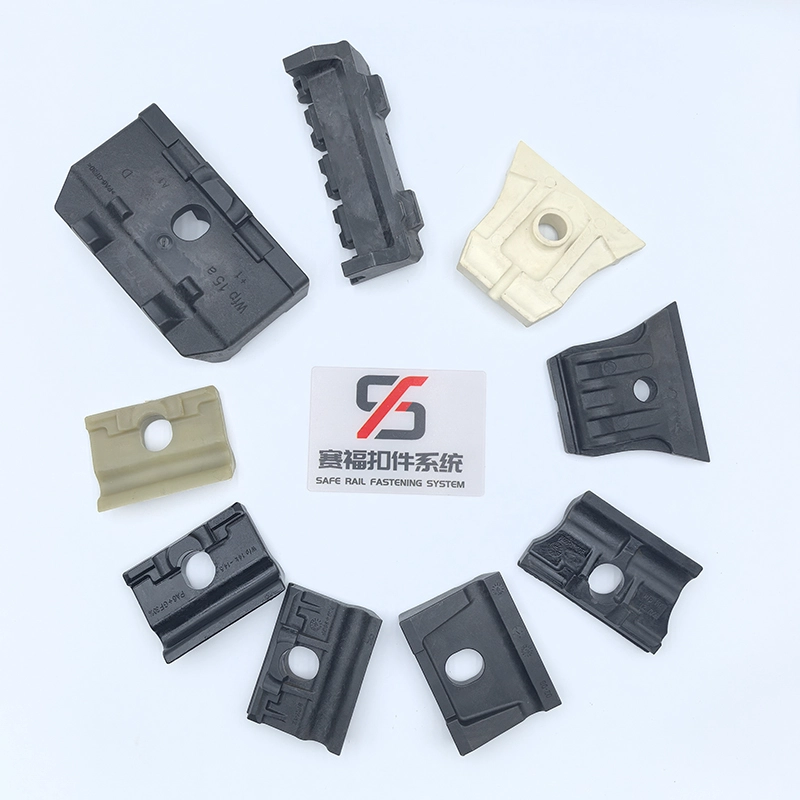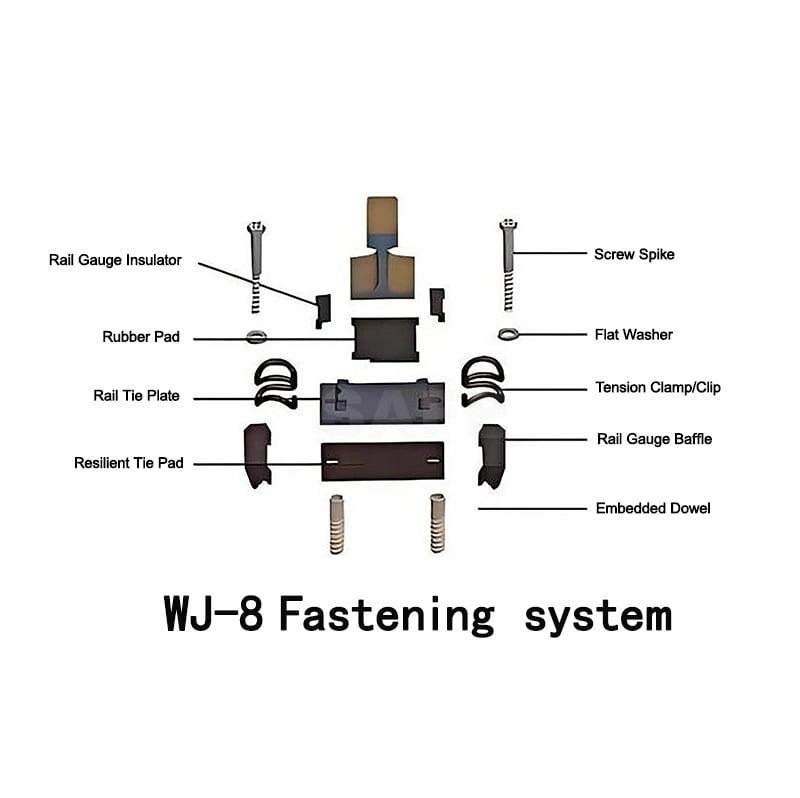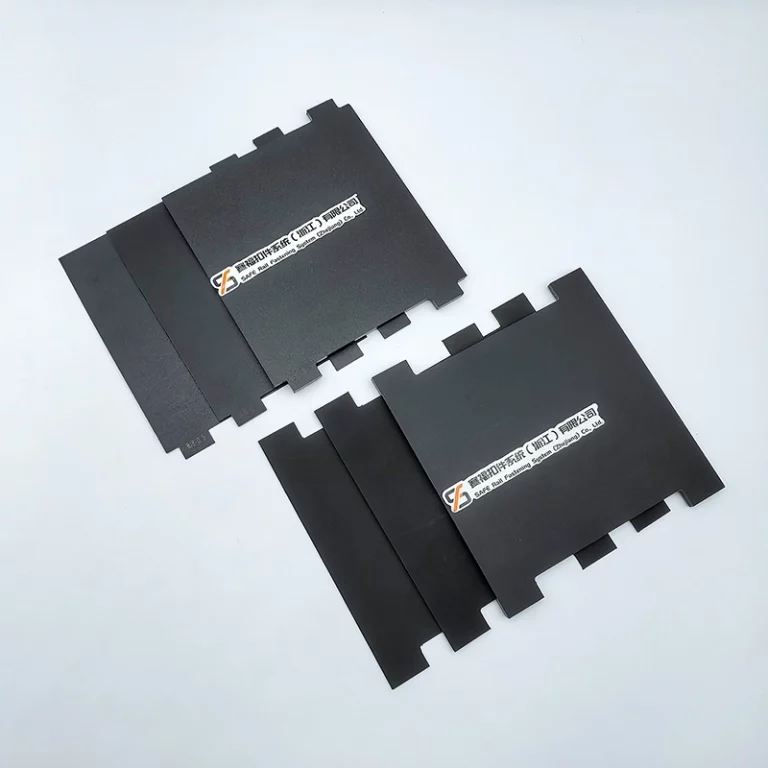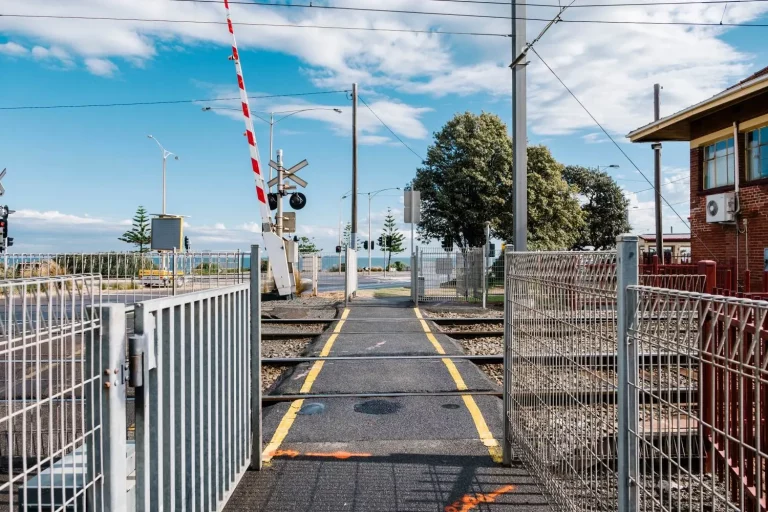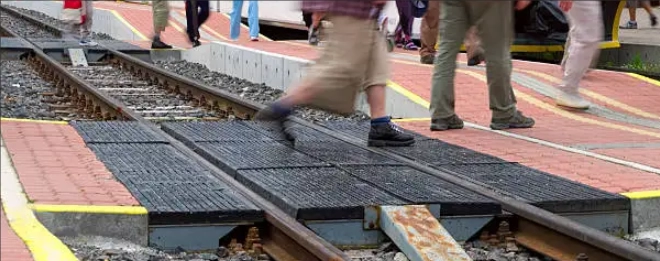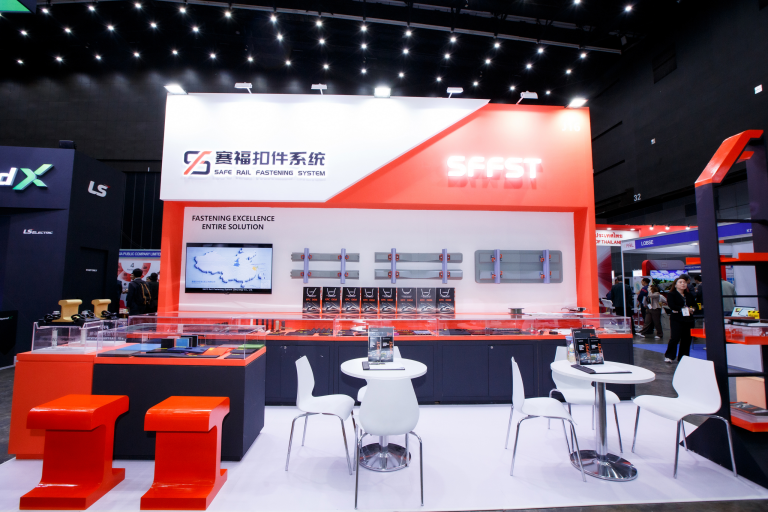Railway systems move people and goods safely across the world. A key part, the Rail Gauge Baffle, helps keep tracks steady and safe. This article explains the Rail Gauge Baffle function, its role in railway track components, and why it matters for safety.
If you work with trains, study engineering, or just want to learn about tracks, this guide gives a clear and detailed look at this important piece.
What is a Rail Gauge Baffle?
Defining the Rail Gauge Baffle
A Rail Gauge Baffle is a special part in the rail fastening system. It keeps the two rails of a track at the right distance, called the rail gauge. This distance is vital for keeping trains stable. Rail Gauge Baffles are made from strong materials like tough steel, composites, or sturdy plastics. These materials handle the heavy forces and rough weather of railway work.
Rail Gauge Baffles team up with other railway track components like clips, plates, and insulators. Together, they form a strong system that holds rails in place. By stopping side-to-side movement and supporting gauge optimization, these baffles help trains stay safe, even at fast speeds.
Why Gauge Optimization Matters
Gauge optimization means keeping the rails at the correct distance, usually 1,435 mm for standard tracks. If the rails shift, trains can wobble, wear out parts, or even derail. Rail Gauge Baffles fix this by:
- Stopping Side Shifts: They catch and spread out sideways forces from trains. This keeps rails in place.
- Reducing Wear: Proper alignment lowers stress on rails and parts. This makes them last longer.
- Improving Comfort: Steady tracks mean less shaking. Passengers enjoy a smoother ride.
To learn more about Rail Gauge Baffle details, check out the Product page from SAFE Rail Fastening System.
Key Functions of Rail Gauge Baffles
Keeping Tracks Steady
The main Rail Gauge Baffle function is to hold tracks firm by keeping rails at the right distance. Baffles pass sideways forces from rails to other parts, stopping unwanted shifts. They fight forces like train speed, side pushes, and weather changes like heat or cold.
| Function | How It Helps Railway Safety |
| Gauge Control | Keeps rails spaced right. This stops derailments from misaligned tracks. |
| Force Sharing | Spreads forces across ties and fasteners. This lowers wear on parts. |
| Side Movement Block | Stops rails from sliding sideways. This boosts track steadiness. |
| Shake Reduction | Cuts down vibrations. This gives smoother rides and less stress on tracks. |
Helping Rail Fastening Systems
Rail Gauge Baffles are a big part of the rail fastening system. They work with parts like elastic clips, screw spikes, and insulators. For example, in the WJ-8 Fastening System, Rail Gauge Baffles hold the gauge steady while allowing small tweaks during setup or fixes.
This teamwork makes the whole system work smoothly for fast or heavy trains.
Handling Tough Weather
Modern Rail Gauge Baffles are built to survive rough conditions like hot sun, cold frost, or wet rain. Materials like strong composites and tough plastics, like those in SAFE’s non-metal Rail Gauge Baffles, are light but last long. They resist rust and wear, keeping tracks reliable for years.
Why Rail Gauge Baffles Matter for Safety
Stopping Derailments
Derailments are a big danger in railways. They often happen when tracks move out of place. Rail Gauge Baffles prevent this by keeping rails perfectly aligned. By ensuring gauge optimization, they lower the chance of tracks shifting and causing accidents.
Boosting Train Efficiency
Stable tracks let trains run fast without safety risks. Rail Gauge Baffles help by cutting down on repair needs and making other railway track components last longer. This saves time and money for railway companies.
Supporting Fast and Heavy Trains
Fast trains and heavy cargo trains put extra stress on tracks. Rail Gauge Baffles, like those in SAFE’s NABLA C1 Fastening System, are made to handle these tough conditions. They keep the gauge steady, ensuring safe and smooth runs.
SAFE: A Trusted Name in Rail Solutions
SAFE Rail Fastening System, is a top maker of railway equipment, including Rail Gauge Baffles and rubber pads. Since the 1980s, SAFE has built a strong name by creating reliable products that meet high global standards like EN 13146 and China’s TB standards. Their modern factories and focus on new ideas ensure products like the non-metal Rail Gauge Baffle work well and last long. Visit their Why SAFE page to learn more about their skills.
FAQs About Rail Gauge Baffles
What does a Rail Gauge Baffle do?
The main Rail Gauge Baffle function is to keep rails at the right distance. This ensures track stability and stops derailments from misaligned tracks.
What are Rail Gauge Baffles made of?
Rail Gauge Baffles are made from strong materials like tough steel, sturdy plastics, or composites. These resist wear and handle tough railway conditions.
How do Rail Gauge Baffles improve track stability?
Rail Gauge Baffles stop rails from moving sideways. They spread forces evenly and cut down shakes. This keeps tracks steady and trains safe.
How often should Rail Gauge Baffles be checked?
Rail Gauge Baffles need regular checks, usually every few months, as part of track upkeep. This ensures they stay strong and work properly.
Can Rail Gauge Baffles fit different tracks?
Yes, Rail Gauge Baffles can be made to fit specific tracks, like those for heavy trains or unique conditions. This ensures they work with various rail fastening systems.
Build Safer Railways Today
Rail Gauge Baffles may seem small, but they make a big difference in railway safety and efficiency. They ensure gauge optimization, support track stability, and strengthen rail fastening systems. For railway workers and engineers, choosing high-quality Rail Gauge Baffles means safer and smoother train operations.
Explore SAFE’s smart solutions, including their rail fastening systems, to improve your railway projects. Visit the SAFE website to see their full range of products and learn how their expertise can help build safer, stronger rail networks.



